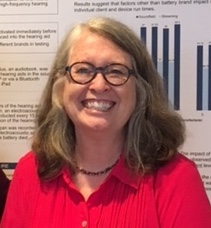
Kris English, PhD
Professor Emeritus
The University of Akron
A Conversation Overheard in Clinic:
New Patient: My bridge party friends roll their eyes when my friend Mary joins us. Her hearing aids don’t help her and we have to shout at her all afternoon. I think my hearing is getting as bad as hers.
Audiologist: Feel free to give her my number, I could probably adjust her aids.
Oops.
The attentive reader will immediately spot a communication mismatch (Clark & English, 2019). The patient was dropping a clue regarding her own hearing, but as professional problem-solvers, we can find it hard to resist the fixable problem. As a consequence, the audiologist didn’t notice that the patient used an indirect opening to discuss her own worries. (Fortunately, her next attempt was quite direct and everyone was back on track.)
The Challenge of Indirect Comments: Easy to Miss
This patient’s indirect approach is likely more common than not. For instance, Adams et al. (2012) recorded 79 patients’ encounters with 27 physicians, and identified 190 patient emotional-state comments. Of these, 58% were indirectly stated (e.g., “that’s the hardest part”).
From their evaluation of 116 clinical conversations, Levinson et al. (2000) provide an instructive dialogue with an indirect — and missed — clue:
“Most often, emotional clues were embedded in a biomedical examination (e.g., during pauses in measurement of blood pressure). Typically, such clues were raised indirectly when the conversation touched on an emotional issue…
Physician: Your blood pressure is looking good; 140 over 70, pretty good.
Patient: My sister was in a car accident 4 weeks ago, and she’s been…
Physician: How’s she doing?
Patient: She’s staying with me, she’s doing better, she gets dizzy a lot.
Physician: Dear me, any neck injuries?
Patient: I know they checked her, and they said it’s OK” (p. 1024).
Why Indirect?
We can certainly understand the indirect approach: patients may feel embarrassed, or worry about what will happen if they put their thoughts into words. They may not be sure they can trust their clinician with personal disclosures. We “test the waters” like this ourselves, to determine if a communication partner is attentive and receptive.
Understanding the reasons for indirectness is a start; if we hope to be helpful, we also need to notice the clues.
“Try to Be One of Those People…”
An achievable goal for the New Year might be to channel our inner Sherlock Holmes and be more alert to patient clues. As Charon (2017) puts it, “Henry James’s dictum to novelists, ‘Try to be one of those people on whom nothing is lost’ … can also be said to listeners” (p. 166).
A Note to Preceptors and Clinical Instructors
For those who supervise students, consider this assignment: keep a journal or log of patient comments, organized as direct or indirect clues, to determine the proportion of each over a period of time. Learning objectives: (1) Demonstrate attention to patient concerns; (2) Demonstrate “close listening” skills relative to patient concerns; (3) Demonstrate journaling/reflection skills (a recommended practice for professional growth per Schön, 1987).
If learning outcomes are fruitful, please consider submitting a report! Contact Kris: [email protected]

References
Adams, K., et al. (2012). Why should I talk about emotion? Communication patterns associated with physician discussion of patient expressions of negative emotion in hospital admission encounters. Patient Education and Counseling, 89, 44–50.
Clark, J., & English, K. (2019). Counseling-infused audiologic care (3rd ed.). Cincinnati OH: Inkus Press. https://www.audiology-counseling.com
Schön, D. (1987). Educating the reflective practitioner. San Francisco: Jossey-Bass.
